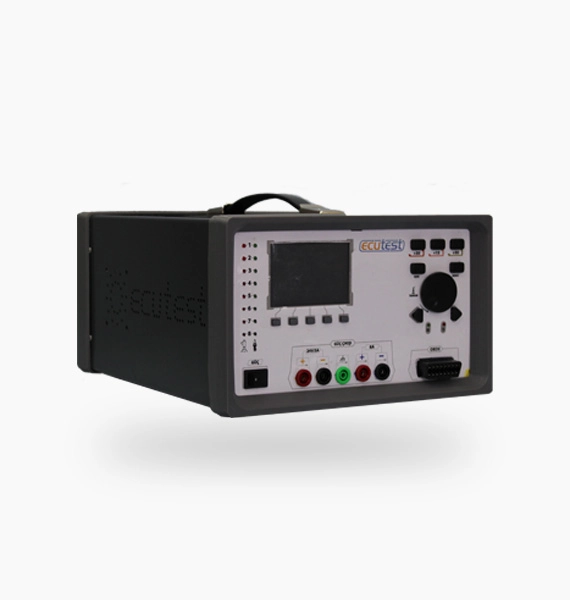Bosch EDC7UC31 ECU Repair
Ecu Repair – ECU Name: BOSCH EDC7UC31
Vehicle Information: FORD CARGO 1846- 2013 Model-Diesel-6 Cylinder-EURO 5
Materials Used: Ecutest Ecu Simulation and Tester, Thermal Camera (Optional), multimeter and soldering iron set
FORD CARGO 1846 EURO 5 heavy vehicle owner called our garage and stated that the heavy vehicle burned 2 times more fuel than the normal fuel consumption and the engine malfunction lamp turned on.
First, we told our customer to leave the vehicle running for 10 minutes and check the engine temperature after 10 minutes or while on the road, and we learned that the engine temperature did not increase.
We told his master to first check the engine coolant temperature (ECT) sensor’s plugs and wiring, and stated that there was no problem with the socket and the wiring.
We detected that the vehicle’s (ECT) engine coolant sensor has a malfunction on the Ecu because the engine coolant temperature sensor signals the engine Ecu that the engine temperature is always low, the engine injectors ignite more, keep it running at high idle and consume more fuel.
On top of that, because the problem is in the engine Ecu , the engine turns on the malfunction lamp. We removed the Ecu of FORD CARGO 1846 from the vehicle and brought it to the desktop.
A connection was made between the pins of the BOSCH EDC7UC31 Ecu belonging to FORD CARGO 1846 and the Ecutest Ecu Simulation and Test Device on the desktop.
You can make this connection with the help of the socket belonging to the BOSCH EDC7UC31 Ecu or with the help of the Unıversal Cable, which allows you to connect easily to all the vehicles provided with the ECUTEST device.

We made the connection with our Universal cable and ran the ECUTEST program on our computer. After selecting the vehicle brand and model, our simulation screen opens by confirming the BOSCH EDC7UC31 Ecu .
When our simulation screen was opened, we first checked the supply voltages to the sensors by clicking the ‘Sensor Powers’ button on the left and observed that it was okay. We check the Temperature-Position (Level)-Pressure sensors on the right side of our simulation screen.
Ecutest Ecu Simulation and Test Device allows us to easily assign values to these sensors. We can optionally check these values with any diagnostic device that we will connect to the OBD socket input on the front of the Ecutest Ecu Simulation and Test Device.
We observe that the value we assign to the engine coolant temperature (ECT) sensor is different from the value shown on the screen, and the sensor gives a fault warning in red, and we can easily detect the problem with the Ecutest Ecu Simulation and Test Device.
After detecting that the engine coolant temperature (ECT) sensor is defective, we clicked the ‘Component Description’ button at the top of our simulation screen, and we saw the integrated engine coolant temperature (ECT) sensor was connected, then exit here and click the ‘ECU Electrical Diagram’.
The path of the pins was checked by learning the pins connected to the temperature (ECT) sensor, and it was checked with the help of a multimeter that there was no problem on the way.
When we checked the integrated engine to which the engine coolant temperature (ECT) sensor was connected with a multimeter, we found that the integrated legs were short-circuited to each other, and when we looked with a thermal camera, it was much higher than normal and lost its function with both the multimeter and the thermal camera.
It was observed that the engine coolant temperature (ECT) sensor did not allow the sensor to function properly, as it lost its governing integrated function. By removing the integral that manages the engine coolant temperature (ECT) sensor without damaging the ECU with the soldering iron equipment, a robust integral was placed in its place.
After replacing the integrated, we reconnected the Ecu to the Ecutest Ecu Simulation and Test Device. We have seen on the desktop that the engine coolant temperature (ECT) sensor works smoothly, the value we assigned to the sensor and the value it shows are the same, and it works smoothly with the help of the Ecutest Ecu Simulation and Tester.
In this way, the failure of the BOSCH EDC7UC31 Ecu on the desktop without being in front of the vehicle was easily resolved with the Ecutest Ecu Simulation and Test Device with the lowest cost and exact solution and the Ecu was delivered to the customer.
